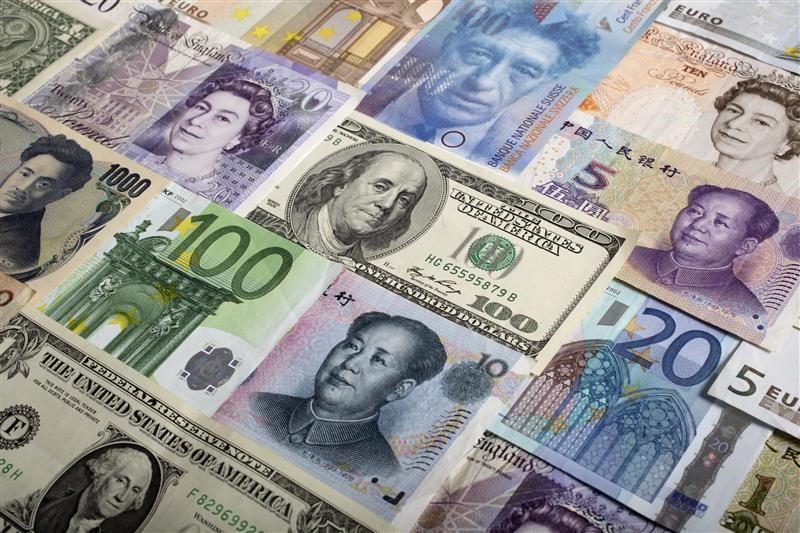* Swiss franc at 3-month peak vs dollar, yen at 1-month high
* Aussie, Mexican peso among biggest losers after recent rally
* Graphic: World FX rates in 2020 https://tmsnrt.rs/2RBWI5E
By Hideyuki Sano
TOKYO, June 12 (Reuters) - The Australian dollar and other risk-sensitive currencies gave up more ground on Friday, while safe-haven currencies were supported after equities tumbled on growing doubts over a quick recovery from the coronavirus pandemic.
Still-rising infections around the world added to the Federal Reserve's sobering economic assessment this week, which sparked a selloff in global equities and heightened risk aversion.
But many market players saw the sudden moves as position unwinding after a rapid build-up of bets on risk assets that had taken off on hopes of further economic re-openings in many countries.
"This looks like a textbook case of risk-off trade, with currencies like the Australian dollar, the Norwegian crown and the South African rand getting whacked," said Kazushige Kaida, head of FX sales at State Street (NYSE:STT) Bank's Tokyo Branch.
"So much so that I would even think these moves were driven mostly by algorithm or model driven players rather than by a diverse number of human players," he said.
The Australian dollar lost 0.5% to $0.6822 AUD=D2 , after Thursday's 2% drop, the biggest daily fall since the market turmoil of March.
The euro slipped to $1.1291 EUR= , easing further from Wednesday's three-month high of $1.14225 while the British pound similarly fell to $1.2556 GBP=D4 from Wednesday's high of $1.2812.
The Norwegian crown lost 3.8% on Thursday and was quoted 0.6% softer at 9.689 to the dollar NOK= .
Some emerging market currencies that had risen sharply recently were hit hard.
The Mexican peso fell 0.4% to 22.845 per dollar MXN=D4 after a 3.8% fall the previous session. The South African rand nursed Thursday's 3.8% losses at 17.240 to the dollar ZAR= .
REALITY CHECK
After a rally in risk assets since mid-May, the market is now facing a reality check over the prospects of a V-shaped recovery, some traders said.
Following its two-day meeting, the Fed signalled on Wednesday it plans years of extraordinary support for the U.S. economy, which policymakers project will shrink by 6.5% in 2020, with the unemployment rate at 9.3%. that appears to have triggered selling in shares, analysts have said Fed officials have been cautious all along, especially compared to the bullish mood in financial markets until earlier this year.
"It is almost mudslinging to blame the stock falls on the Fed's dour assessment. Most market players have acknowledged that the stock rally has been driven by excess liquidity and the Fed's accommodative stance is unlikely to push stocks lower," said Makoto Noji, chief currency strategist at SMBC Nikko Securities.
"In short, it was a correction from an overbought market, which should not last long. But what we should be careful is that the market's fall could continue if we have more bad news from China and Europe for instance."
The tensions between the United States and China have shown limited signs of abating while Europe is facing tough negotiations next week on its plan for a common recovery fund.
The coronavirus is nowhere near getting contained with cases accelerating globally as many developing countries struggle to keep the outbreak under control.
In the United States, new infections are rising slightly after five weeks of declines. Part of the increase is due to more testing, but recent economic re-openings and mass protests against police brutality and racism are seen heightening health risks. currencies are thus in demand.
The Swiss franc held firm at 0.94395 per dollar CHF= , having hit a three-month high of 0.9376 on Thursday.
The yen traded at 107.10 per dollar JPY= . It struck a one-month high of 106.58 on Thursday, having gained 3.1% from a 2-1/2-month low hit just a week ago. (Editing by Muralikumar Anantharaman and Jacqueline Wong)
